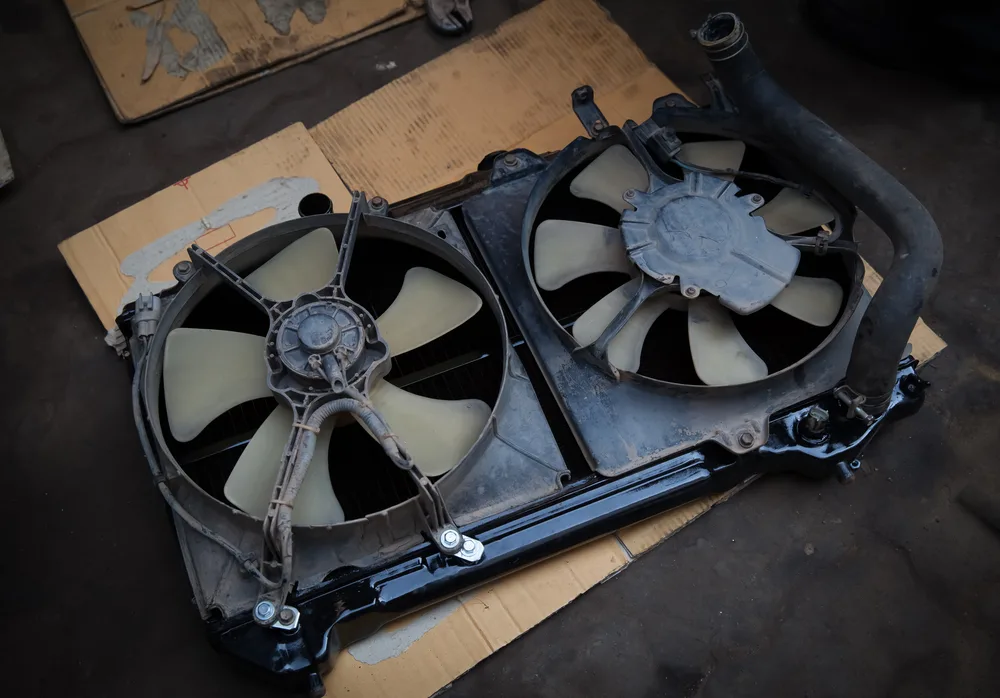The Three Fan Laws
Discover the Three Fan Laws, fundamental principles governing fan performance, efficiency, and power consumption in HVAC systems.
Read More
Electric fans are a crucial component in modern automobiles. These devices, typically mounted behind the radiator or condenser, are designed to enhance the vehicle’s cooling system by drawing air through the radiator and expelling heat from the engine compartment.
In this blog post, we will delve into the intricacies of electric fans in cars, exploring their functionality, operational principles, and the various roles they play in maintaining a vehicle’s overall health and efficiency.

An electric fan in a car is a crucial component of the vehicle’s cooling system, designed to regulate engine temperature and prevent overheating. Unlike traditional fan clutches that rely on the engine’s mechanical power, electric fans are powered directly by the car’s electrical system. This allows for more precise control over the fan’s operation based on coolant temps and engine temp.
Electric fans are typically mounted in a fan shroud assembly onto the radiator at the front of the engine bay. They work in conjunction with other cooling system components, such as the water pump, thermostat, and temp sensors, to maintain optimal operating temperatures. When the engine is running, the water pump circulates coolant through the engine block, cylinder heads, and radiator. As the coolant passes through the radiator, the electric fan helps draw cool air through the radiator fins, absorbing heat from the coolant.
The electric fan is controlled by the engine’s computer or a separate fan controller module. It receives input from temp sensors that monitor coolant and ambient temps. When the coolant reaches a preset temp setting, usually around 200 degrees Fahrenheit, the computer sends a signal to activate the electric fan. The fan then runs until the coolant temp drops back down to the desired level.
The primary function of an electric fan is to dissipate heat from the engine bay. As your engine operates, it generates significant heat. While the radiator helps to cool the coolant, an electric fan enhances this process by drawing cool ambient air through the radiator fins. This airflow rapidly dissipates heat, ensuring your engine maintains stable operating temperatures.
At idle or low speeds, your engine produces heat but lacks the airflow generated by motion to cool itself adequately. This is where electric fans shine. They provide consistent airflow even when your vehicle is stationary or moving slowly, preventing the coolant temps from rising to dangerous levels.
Using sensors to monitor coolant temps, the fan control system activates the fan when needed and adjusts its speed to maintain the desired temperature range. This level of precision is essential for today’s engines, which are designed to operate within specific temperature parameters for peak efficiency and longevity.
When your AC is running, it places an additional load on the engine, which can lead to increased heat production.
Electric fans help to mitigate this extra heat by providing supplemental cooling when the AC compressor is engaged.
While electric fans are primarily designed to improve cooling efficiency in vehicles, they can indirectly contribute to a slight increase in horsepower.
By replacing the traditional belt-driven fan clutch with an electric fan, the engine no longer needs to expend power to drive the fan. This reduction in accessory load on the engine can lead to a modest horsepower gain, typically around 5-10hp.
The fan plays a critical role in drawing cool air through the radiator to dissipate heat from the coolant. Without a functioning fan, the coolant temperature can quickly rise, especially in slow-moving traffic or when the vehicle is stationary.
If left unchecked, overheating can cause severe damage to engine components, such as warping cylinder heads, blowing head gaskets, or even seizing the engine.
If the fan stops working, the AC system may struggle to remove heat from the refrigerant, resulting in reduced cooling performance. This can lead to warm air blowing from the vents and an uncomfortable cabin environment, particularly in hot weather conditions.
As the engine temperature rises due to a malfunctioning fan, the coolant may begin to boil and expand. This expansion can cause the coolant to escape through the overflow tank or radiator cap, leading to a loss of coolant volume in the system.
Low coolant levels further exacerbate the overheating issue and can result in air pockets forming in the cooling system, impeding proper circulation.
Modern vehicles are equipped with various sensors, including a coolant temperature sensor, that monitor the engine’s operating conditions. If the coolant temperature exceeds a predetermined threshold, the engine control module (ECM) may trigger a warning light on the dashboard, such as the “Check Engine” or “Temperature” light.
In some cases, the ECM may also initiate a “limp mode,” where engine performance is reduced to prevent further damage from overheating. This mode limits the engine’s RPM and power output, allowing the driver to safely pull over and address the issue.